South African Campaign to World War 1 – Sgt A James.
The committee who decided what information should be on the Dallas, Morayshire, war memorial were considerate of the modern-day researcher. These thoughtful people included name, rank and regiment – such foresight to consider future researchers?
The man who caught my attention is Alexander James born on 10th February 1884. Alexander served as

Menin Gate
CWGC image
Sergeant 28590, in the battalion Canadian Infantry. He Alexander died on the 13th of June, 1916, aged 32 and remembered on the Menin Gate Memorial, Ypres. The CWGC website includes Alexander’s regiment and place of remembrance. Also included are his parent’s names and where they lived. There is one other piece of information, making Alexander’s story more interesting.
What could this information be?
It is that Alexander served in the South African Campaign. The Imperial Yeomanry Records 1899-1902 are available from the National Archives. They are also available on Ancestry – Alexander’s Short Service Attestation is there.
Alexander was 20 years and one month old when he signed to serve. Alexander was born in the parish of Speymouth near Fochabers, Morayshire, at the time of his enlistment he was working as a farm servant. Alexander had left home three years earlier – probably now living on or near the farm where he worked. He signed the papers in Inverness o the 4th of December 1901, before Colonel Shaw.
If you walked down a street in Inverness or strode down Fochabers High Street, would you have recognised Alexander? Perhaps you would have done if I tell you that he was 5′ 8″ tall. He was quite well built, with an expanded chest of 39½”. Alexander had a fresh complexion, with dark brown hair and blue eyes. On his right forearm, he had the tattoed figure of a female plus a visible scar.
Alexander was now part of the 1st Battalion Scottish Horse, Imperial Yeomanry, serving as Private (Trooper) 37478. Discharged the following September after serving in South Africa. After initially serving 37 days ‘At Home’. From the 11th of January 1902, 230 days in South Africa followed by a final seven days ‘At Home’ before discharge. His service ended with him awarded the Queens’ Medal and Claps and South African Medal plus claps. His next of kin was his father James James, who lived at Blackhills, Rafford by Forres. I wonder when I research a soldier from Morayshire if their paths cross of my Riach and Hay families, especially when there is a connection to a place – did they know each other?
Alexander’s conduct while with the Colours had been ‘very good’. He signed his name – he was no longer in the army. His time in the Yeomanry came to an end. After this time in his life, he intended to live at Graus (sic), Burnside, Dipple, Fochabers.
How did Alexander end up serving with a Canadian Regiment?
Sometime between his discharge from the army in 1902 and when he re-enlisted in 1914, he ventured abroad. I haven’t done in-depth research for his travel details, hence the broad spectrum. But he did end up there!
Alexander’s service records are available to research, unlike many British documents destroyed or damaged in WW2. The first page of his records confirms his two years service with the Scottish Horse. Also of three years with the Cameron Highlanders and eight years with the Royal Horse. It makes you wonder when he had time to work and then venture to Canada.
Alexander’s WW1 records duplicate the more general information or expand those details. One such example is that of Alexander’s tattoo. In his 1901 documents, the description is of a generic lady. Yet, in his WW1 documentation, the information is more detailed – an American or Mexican woman. Alexander had the tattoo in 1901 when he signed up for the South African Campaign. Why would a 17-year-old who, by then had not left his native Scotland, want to have this on his arm? One other descriptive snippet was that he had a mole on his right clavicle.
On the 10th of August 1914, he attended the recruiting office in Victoria. On the 23rd of September, 1914, he was fit. Alexander was once again with the Colours. On enlistment, he was with the 19th Canadians, service number 28590, later with the 43rd Battalion, C.E.F. (Canadian Expeditionary Force).
Alexander’s Will, extracted from his Pay Book, left all his property and effects to his mother, Jessie of Blackhills, Rafford.
In March 1916, Alexander received a G.S.W. (gunshot wound) to his left leg while on active service. After his time in hospital in the ‘at home’. He underwent a medical examination at Sandygate. After four weeks of physical training, he was to be fit.
There are so many pages to Alexander’s records, so many details and snippets of information I could continue to write for a long time. So I will highlight a few of the memorable times in his service.
- 8 February 1915 Promoted to Corporal while at sea.
- 15 March 1915 Promoted to Sergent while in France.
- 3 May 1915. Admitted to Military Hospital Colchester.
- 15 July 1915. Discharged to furlough, Shorncliffe.
- 28 July 1915. Reported from sick furlough, Shorncliffe.
- 6 December 1915. Taken back on Strength, Shorncliffe.
- 1 March 1916. Convalescent Hospital at Woodcote Park, Epsom.
- 24 March 1916. Taken back on Strength,
- 24 May 1916. Reports to Folkstone from Epsom.
- 6 Jun 1916. Transferred to 16th Battalion – Overseas.
- 31 May 1916. Promoted to Sergent – in the Field.
- 27 June 1916. Killed in Action.
- 4 July 1916. The correct date of death amended to 13 June 1916
- Alexander spent a total of 61 days in the hospital.
Alexander’s three medals and Memorial Cross went to his mother, Jessie. While James, his father, received the Plaque and Scroll.
Alexander’s papers, like nearly all other service records, are not in chronological order. Close to the end of the records is a ‘Statement of Case’ – a description of the events on the day Alexander received his G.S.W.
Completed by the Medical Officer.
Alick James, formerly an Engineer. Disability – Shrapnel to Left Leg.
Date – 22 April 1915. Place – Ypres.
Statement – States he was charging with the 16th Batt. on night of 22nd Apl. When he was wounded in the left leg by shrapnel. Was in hospital until 14 July. The wounds having bee infected. Two pieces were said to have been removed, seven pieces to have been left in leg. State that leg swells badly whenever he does any walking, that he suffers considerable pain.
Reasons for disability – Shrapnel fragments in leg.
What is his present condition? There are eight wounds on left leg (punctured(?)). The increased movements of knee normal, those of ankle slightly limited. The largest scar is adherent to underlying muscle and construction of soleus muscle causes pain.
Change to England – Light Duty & operation.
Alexander, according to the Canadian War Graves Register, was attacking or being attacked near Zillebeke, Belgium – some 7 minutes drive from Ypres. Hence, him being remembered on Menin Gate Memorial.
The Morayshire Roll of Honour – JAMES, Alexander. No. 28590,
Sgt., 16th Canadian Scottish ; born at Trochill, Speymouth, Morayshire, 10th Feb., 1884 ; joined in British Colombia, Canada ; served i n France ; wounded, April 14th 1915, and killed between 12th and 14th June, 1917 (should be 1916), presumed at Ypres ; awarded South African Medal with four clasps. Son of J. and Jessie Ann James, Blackhillock, Burgie, Forres, Morayshire. Occupation, engine driver.



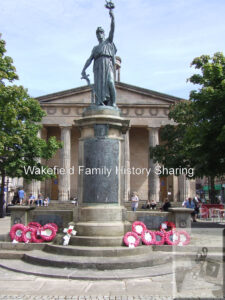
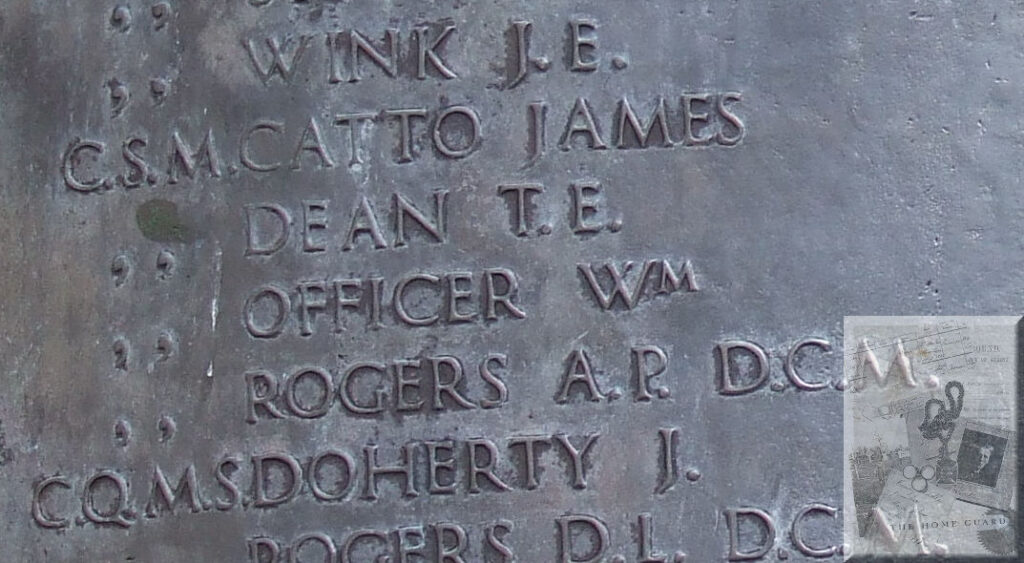
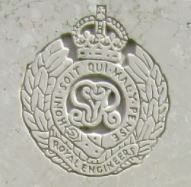
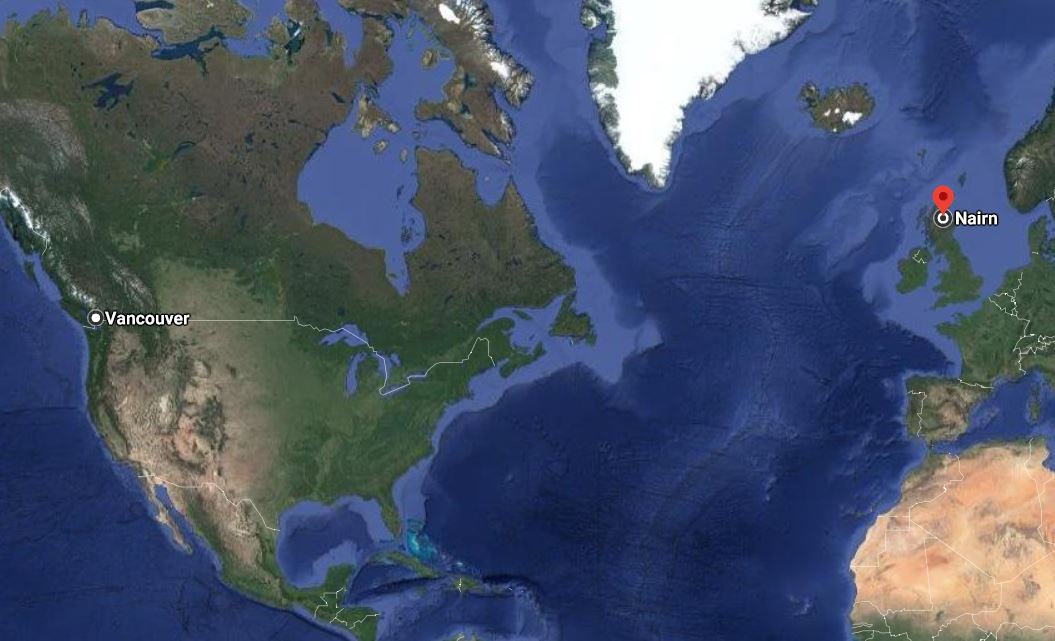
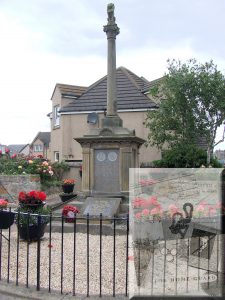 James Main Bochel is remembered locally on the Burghead War Memorial.
James Main Bochel is remembered locally on the Burghead War Memorial.
